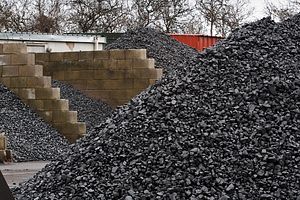China will impose a new resource tax on coal of between 2 and 10 percent, China’s Ministry of Finance and State Administration of Taxation announced on October 11. The new tax regime is part of broader efforts to reduce China’s reliance on coal, which has taken a heavy toll on China’s environment.
The explicit aim of the new tax measures, according to Xinhua, is to “boost energy conservation.” Beijing wants to incentivize efficient energy use in a bid to help control China’s pollution problems. Levying a tax can both encourage responsible energy usage as well as providing a long-term incentive to switch to alternative energy sources. In addition to the new tax on coal, the Ministry of Finance and State Administration of Taxation announced that the resource tax on crude oil and natural gas would be raised from 5 to 6 percent. Both new tax measures will take effect on December 1. China has also announced a new tariff on coal imports, although China Daily sees this more as a way of protecting China’s domestic coal producers than a step to reduce coal use.
The new tax scheme has been in the works for years now but was politically difficult to implement. Even now that the tax is on the books, Beijing also put into place a number of additional measures designed to “reduce financial burdens on coal miners,” according to the MF/SAT statement. Even while adding the new resource tax, China will eliminate “resource compensation fees” that were previously levied on coal. The tax will also be on the sale of coal, not on coal production, a boon to coal miners already struggling with a supply glut. Finally, individual provinces will be allowed to set their own tax rates within the given range of 2 to 10 percent, which will almost certainly translate to coal-mining centers like Shanxi Province instituting the lowest possible tax.
The new resource tax demonstrates China’s ambivalence toward coal. On one hand, the environmental effects of over-reliance on coal are apparent every winter, when northern cities are covered with a blanket of smog as coal production ramps up to provide heating. According to a 2013 study, air pollution in northern China (much of it stemming from coal use) has cut life expectancies by 5.5 years compared to southern China. On the other hand, coal represents a cheap and widely available energy source that China simply cannot do without in the short term.
To feed its growing energy needs, China now burns roughly as much coal as the rest of the world combined. In 2012, coal accounted for almost 67 percent of China’s total energy production. Beijing plans to cut that number to under 65 percent by 2017 and under 60 percent by 2020. Yet, because China’s overall energy use continues to grow, it’s both possible and likely that cuts to coal use as a proportion of China’s overall energy production will actually be accompanied by growth in absolute coal use. As Reuters noted in January, China approved the construction of 15 new coal mines in 2013, a move that will increase China’s annual coal production capacity by 101.3 million tons.
To account for the realistic necessity of continuing to use coal, China has tried to make sure the coal it does burn has the smallest possible impact on the environment. China has already announced a ban on low-grade, highly polluting coal. The ban will take effect next year. China has also invested lots of time and money in developing “clean coal” plants in the hopes of finding more environmentally-friendly ways of utilizing China’s vast coal reserves.
































